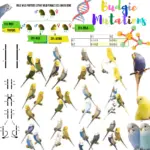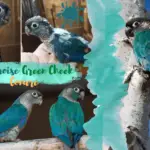
Budgie colors: Here is a summary, which I hope will be as complete as possible, of color genetics in budgie parakeets Rare budgie birds, and Rare budgie colors. If something is missing, or you have nice photos to complete, do not hesitate to report it.
I decided to introduce only 3 “technical terms”: “chromosome”, “gene” and “allele”, which are explained in the introduction.
For two reasons:
- It allows a logical understanding and it avoids confusion (especially in the case of dilutions and yellow masks)
- It makes it possible to understand all cases of crossings, including the most subtle (like:
“How can I get “lacewings” with cinnamon and ino?”) - It corresponds to the biology behind genetics.
The other terms that are necessary to understand the links between the different colors (“recessive” and “dominant”) are explained as the examples progress.
Color budgies
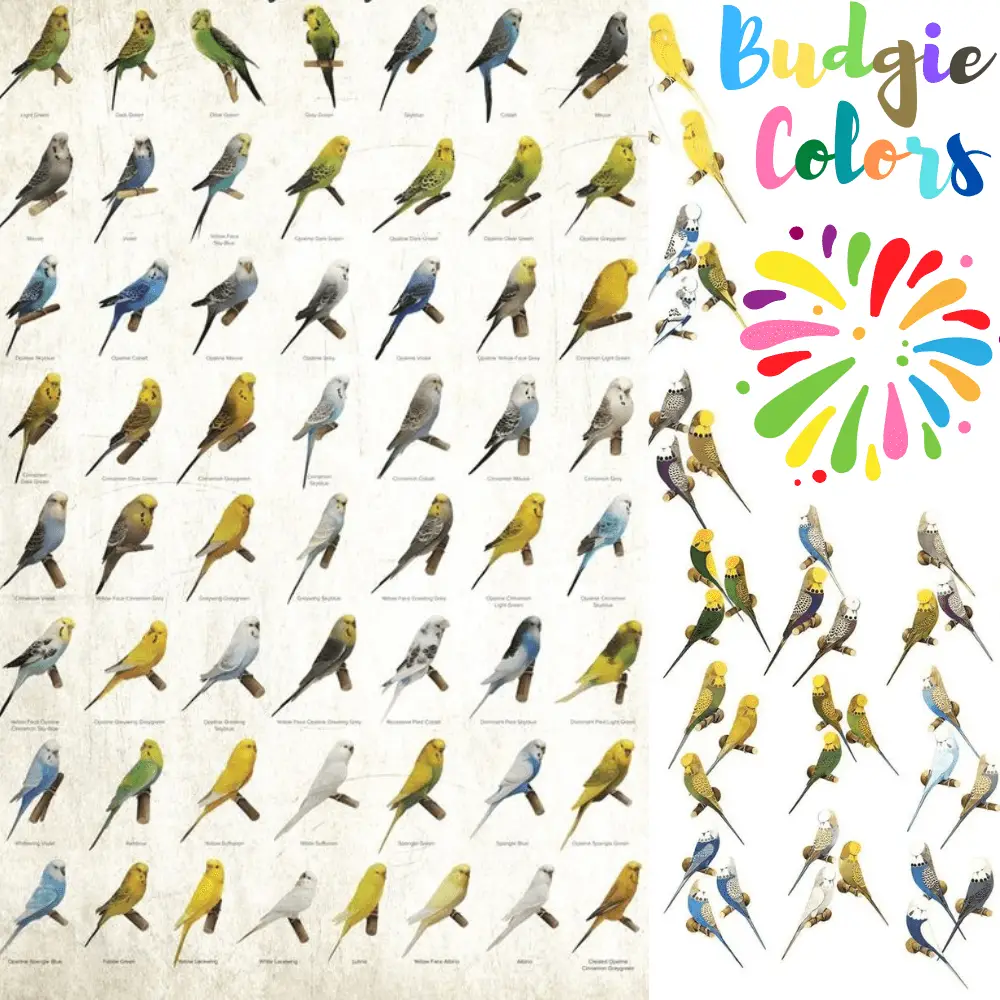
The budgie colors are:
- Dark
- Opaline
- Blue
- Yellow mask 1
- Yellow mask 2
- Golden mask
- Gray wings
- Light wings
- Fullbody
- Diluted
- Ino
- Recessive Ino
- Texas Light Body
- Cinnamon
- Slate
- Violet
- Dominant grey
- Recessive grey
- Anthracite
- Bronze fallow
- English Fallow
- Scottish Fallow
- Australian Fallow
- Dominant clear body
- Danish magpie
- Australian Magpie
- Dutch magpie
- Pearl
- Black face
- Dark wings
- Faded
- Saddlebacked
- Mottled
- Frosted
- Brown wings

For those who want to learn other genetic terms, there is a small lexicon at the bottom. But these terms are not necessary to understand the principles and predict the results of crossbreeding.
Those who are used to talking about mutations and color factors will find it without problem because the principle is the same, simpler. For beginners, once you understand the basic principle, you’ll just feel like you’re making paint mixes on a feather palette. It’s a lot of fun!
And I hope that some may also find it useful…
Budgies live in the wild in Australia. Wild birds are very similar to each other and serve as a reference. Here is a picture (bottom bird):
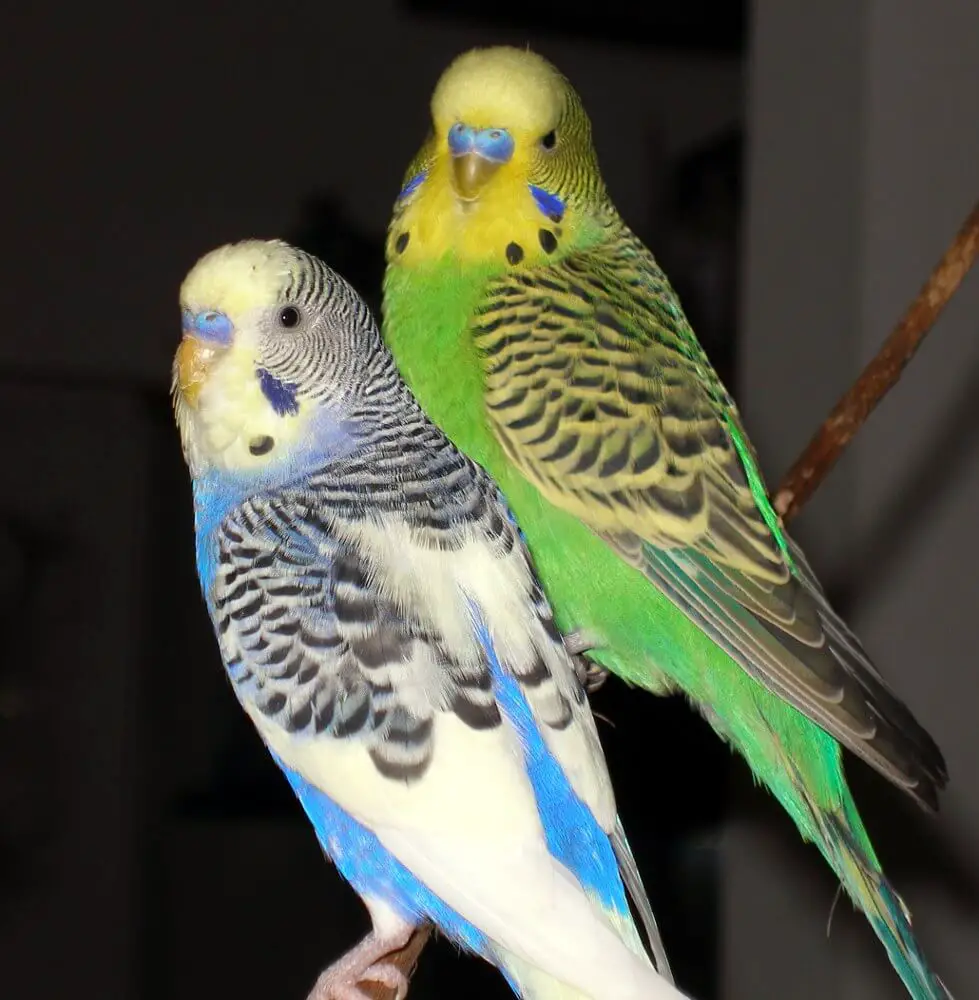
Males and females have plumage of the same color in the wild, but in males, the wax of the beak (which surrounds the nostrils), is intensely blue. In females, it is brown during the breeding season and bluish-white outside.
Juveniles have somewhat duller plumage than adults, with black ripples covering the entire forehead. Their wax is pink-purple in males, and bluish-white in females. Their eyes are black because the iris is colored black.
Two pigments are responsible for the color of this bird: psittacine which is yellow, and melanin which is black. Green is a mixture of psittacine yellow and blue that is not due to a pigment. It is obtained by the diffraction of light on feathers containing melanin.
Wet, the belly of this bird will be brown: yellow (psittacine) blacker (melanin). If there is no yellow, a wet blue belly appears gray. We can see it in this photo taken after a bath:
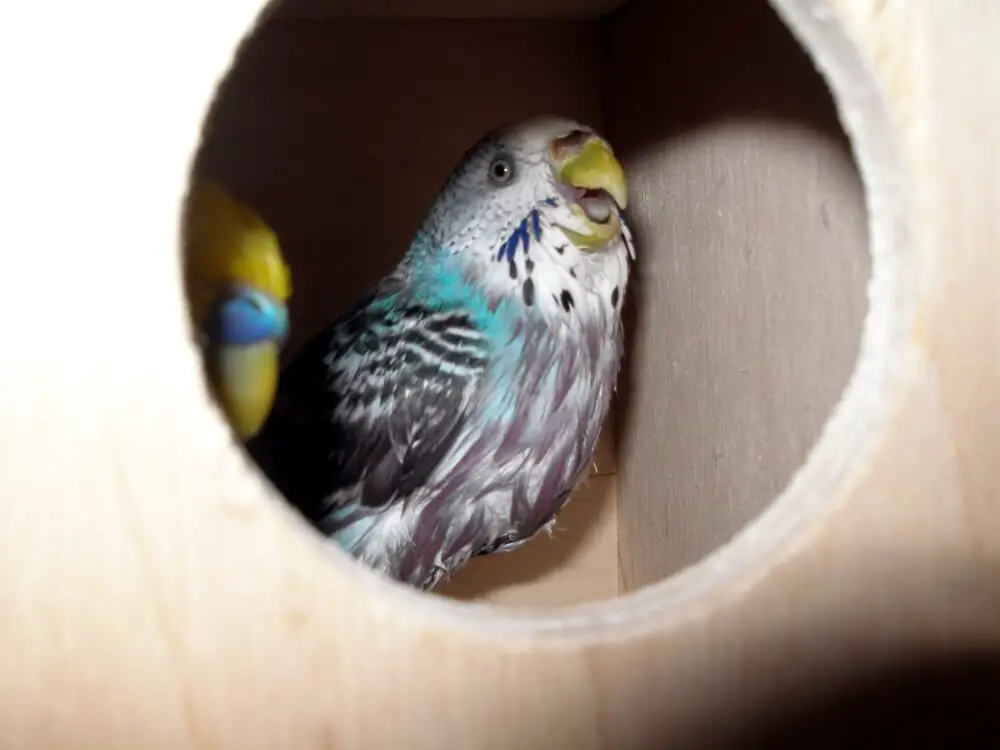
In captivity were selected different colors (such as the foreground bird in photo 1).
The color of a parakeet is determined by its ability to make:
- Pigments, yellow psittacine, and black
- Melanin- feathers capable of diffracting light.
This ability depends directly on its genes. In some birds, such as canaries, the environment can also play a role (fed on carotenoids, they become more yellow or red), but this is not the case for Psittacidae.
Genes are portions of “chromosomes,” long molecules of DNA. The bird always receives half of its chromosomes from its father, and half from its mother, according to the diagram below
Each bird, therefore, has two copies of each chromosome, and so of each gene. These “copies” are called alleles. They can be the same or different. When a cell divides, for example for growth, it must copy its chromosomes, so that each daughter cell has all the genetic information. Sometimes an error occurs during the copy, it is a mutation. If this mutation takes place in the reproductive cells, then it can be passed on to the offspring. A new allele appeared!
Each gene can have multiple alleles in the population, although a bird can only carry two.
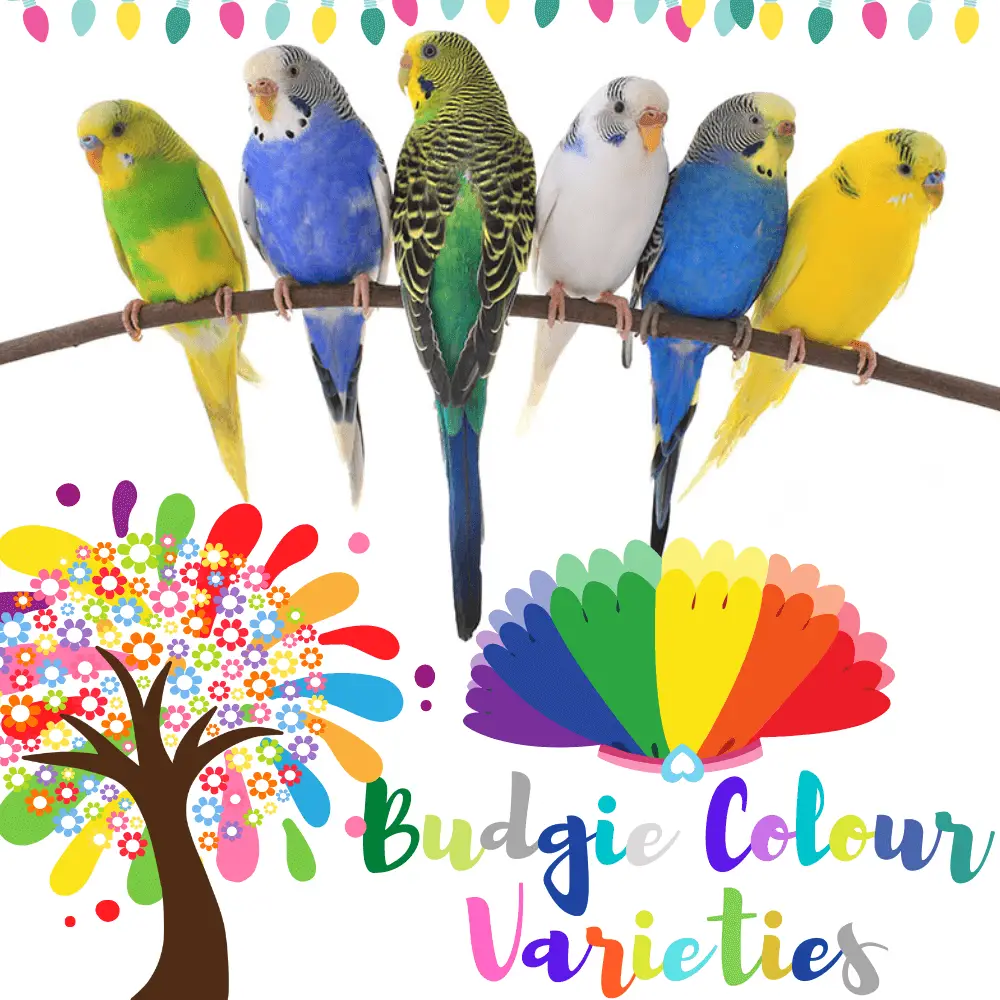
In all known alleles, some emerged by mutation potentially a very long time ago but remained rare or very rare in wild populations. Others, on the contrary, appeared recently, during domestication. You can rarely tell the difference between the two.
In any case, inbreeding (= the crossing of related individuals, with the most alleles in common, inherited from their close common relatives), makes it possible to reveal rare alleles.
In nature, the vast majority of birds have the same color alleles. They are almost all similar. But sometimes, by chance, an individual is born who has a characteristic different from others, such as a blue body instead of green (not yellow). This makes it possible to identify a gene, here involved in the manufacture of the yellow pigment. This gene is then given the name of the color that has just appeared.
In our case, it will be “blue”.
However, it is necessary to distinguish the two alleles: the one that makes it possible to make yolk, the most frequent in the wild population, and the one that does not. The second will be called “b” for blue and the first b+ by convention (+ means “wild type”).

For the names of the alleles, we will use the names given on the Wikipedia page dedicated to the colors of parakeets (see sources), easy to find and very close to international standards (if they are not directly the international standards). For the names of the genes themselves and the colors, we will use translations in French, it is easier.
Budgie colors Blue
(we start with two alleles, bandb+, and we will resume later with all known alleles) – influences the ability to synthesize yellow pigment
The bird has two alleles of each gene, so there are three scenarios: b/b,b+/b, and b+/b+These birds will have different colors:
- b/b is blue-b+/b is green
- b+/b+ is green So only one “b+” allele is enough for the bird to make psittacine and be green.
Green is, therefore “dominant” over blue, which is “recessive” compared to green. By convention, we note the alleles corresponding to the dominant characters in capital letters. It’s easy when there are only two, otherwise, you leave everyone in lowercase.
If you have a green bird, it is therefore impossible to know if it is B+/b or B+/B+ unless it is itself descended from at least one blue parent.
A bird that carries an allele for a recessive character, but without expressing it by the fact that it has only one copy, is said to carry the recessive character.
AB+/bis therefore “blue carrier”.
In the case of a cross between a blue carrier and a blue, we can see on the following table (on the left) two possibilities (at the head of the row and column we have the alleles carried by both parents, the colors of the boxes represent the color of the body of the descendants according to their alleles):

Such crossover tables make it possible to construct hypotheses and to make predictions of the results of crossings. With two green birds, one can imagine cases where both are B+/B+, where both are B+/b and one is B+/B+ and the other B+/b
Budgie colors DARK
(two allelesD+ and) – influences the structure of feathers and how they reflect light
Now let’s look at another color variation: dark.
It is found in the green series or the blue series. There are two alleles, DandD+ (the one most frequently possessed in the wild population).
They have an interesting feature:
a D+/D+ bird is light “wild”, aD+/D is dark and a very dark D/D(at least in greens). So we see that when the bird carries two different alleles, it has an intermediate color between the two extremes. Such alleles are said to be co-dominant.
If we combine the “Blue” gene with the “dark” gene, we obtain a whole range of colors:
- b+/b, D+/D+ or b+/b+, D+/D+: light green “wild type”
- b+/b, D+/D or b+/b+, D+/D: dark green
- b+/b, D/D or b+/b+, D/D:olive
- b/b, D+/D+or b+/b+, D+/D+: light blue “wild type”
- b/b, D+/D: cobalt
- b/b, D/D: purple (a purplish grey) Cobalt bird
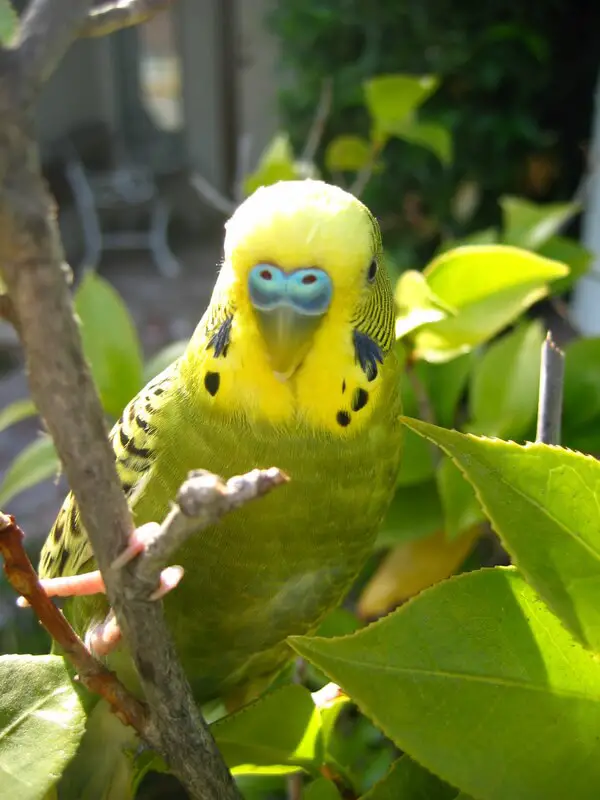
Olive bird
Here is an example of crossing two parents who have two different alleles for the two genes (the alleles of the parents are at the head of the row and column, the two genes separated by a comma, all in all, possible combinations – the color of the box roughly represents the color of the body of each type of offspring):

For convenience, it is better to make simple tables, with 2 rows and 2 columns. We make a single table per gene, which makes it possible to treat as many genes as we want!
Nevertheless, there is a particular reason to treat the “blue” and “dark” genes on the same table: they are physiologically placed on the same chromosome. This means that the proportion of offspring of each color will depend not only on the alleles carried by the parents but also on their combination of the different chromosomes.
If we take a look at the diagram below, which represents two chromosomes, each carrying an allele of the blue gene, and an allele of the dark gene:
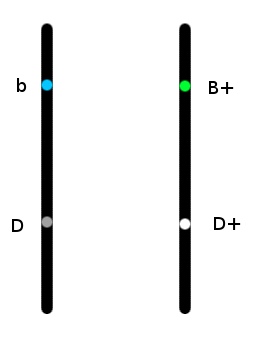
We realize that the alleles are physically linked. This bird will have a very high probability of transmitting the D+ and B+ alleles together and a very low probability (less than 14% according to Wikipedia) of transmitting the D and B+ alleles together. This requires that the chromosomes exchange pieces at the time of the manufacture of gametes (eggs and spermatozoa).
So this consideration may be taken into account to increase its chances of producing birds with special combinations between the “blue” and “dark” genes. To facilitate identification, when we know from the crosses on which chromosome the alleles are placed, we can note the alleles possessed by the birds with the two alleles on each side of the slash.
For example, a light green “wild type” will be noted: b+_D+/b_D+or b+_D+/b+_D+.
A dark green b+_D+/b_D orb+_D/b_D+have has the same alleles but will not have the same probability of having descendants of each color.
It is necessary to make cross-reference tables to realize the changes.
Budgie colors Opaline
(two alleles, Op+, and op) – influences the distribution of black pigment on plumage
This is a special gene because it is on one of the sex chromosomes. In men, the sex chromosomes are “XX” in women (every day two chromosomes, one inherited from the father, one from the mother), and “XY” in men. Y is a tiny chromosome that determines masculinity. In birds, males are ZZ and females WZ (we do not say X and Y so as not to confuse them with the mammalian system).
Opaline is a gene carried by the Z chromosome. Females, therefore, have, exceptionally, only one copy.
They are Zop/W (the black drawing on their backs and wings is modified as in the photo below), or ZOp+/W (Op+ refers to the wild type: no modification of the drawing).
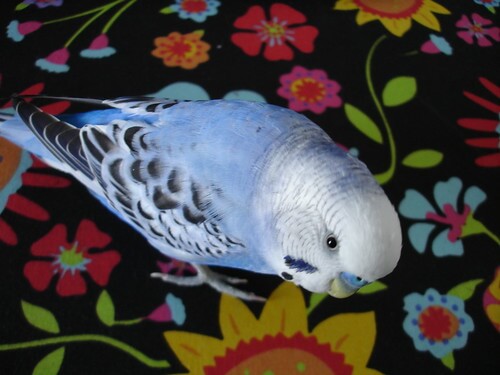
In males, we have a “classic” pattern: Zop/Zop causes the “opaline” drawingZOp+/Zopleaves a “wild type” drawing, so the “opaline” color is recessive compared to the “wild type” drawing.
Budgie colors Blue
(all alleles:b+,b1,b2, by, and bgf) – influences the synthesis of yellow pigment
This blue gene traitor, who seemed so simple just now, is actually a little more complex than he seems. Indeed, it does not just “turn off” the yellow synthesis, it can simply prevent it from occurring on a part of the bird’s body.
It is known 5 alleles, of which there are the effects when they are present in duplicate:
-b+, the wild type, which allows the synthesis of yellow pigment on the whole body-b1, removes the yellow of the whole body-b2 and also removes the yellow of the whole body-byf, removes the yellow of the lower belly-bgf, Removes yellow everywhere except on the head.
The different combinations of these alleles give very varied colors:
- b+/b1: green color “wild type”
- b+/b2: green color “wild type”
- b+/byf: green color “wild type”
- b+/bgf: green color “wild type”
Green is dominant over other colors. The so-called “green series” birds, therefore, have at least one b+ allele. All those who do not have one are called “blue series” (even if they can also have green, as we will see below…)
Budgie colors Yellow mask 1
- b1/b1: no yellow at all, bluebird.
- B2/B2: no yellow at all, bluebird
- B1/B2: “yellow mask type 1”, the yellow pigment is present practically only on the head.
- B1/ByF: “Intense type 2 yellow mask”: the yellow is diluted on the body, the belly is turquoise pulling towards green, and the head is yellow a little light.
- B2/Byf: “light yellow mask type 2”: the yellow is diluted on the body, the belly is turquoise pulling towards blue, and the head is yellow a little light.
- byf/byf: “yellow mask type 2 medium”: the yellow is diluted on the body, the belly is medium turquoise, and the head is yellow a little light.
- B1/BGF: “intense golden mask”: the yellow is a little diluted on the lower belly, which pulls a little towards the bluish, and the rest of the body is green.
- B2/BGF: “light golden mask”: the yolk is diluted on the lower belly, which pulls towards blue.
- BGF/BGF: “medium golden mask”: the yellow is a little diluted on the lower belly, which pulls towards blue, but less than in the B2/BGF.
The b1 and b2 alleles are called “superdominant”. This is a case that is not encountered very frequently, where the two alleles complement each other to restore part of the function of the gene (here, make yolk), while all alone they do nothing or not much. We cannot differentiate b1 and b2, but we can know that they are there when a yellow mask type 1 appears. Coupling
two “yellow masks of type1” can therefore only give the following results (the boxes corresponding to the parents are at the heads of rows and columns, those corresponding to the descendants are yellow when there is a yellow mask, white when the mask remains white):

Here is an image of type 1 yellow mask bird:
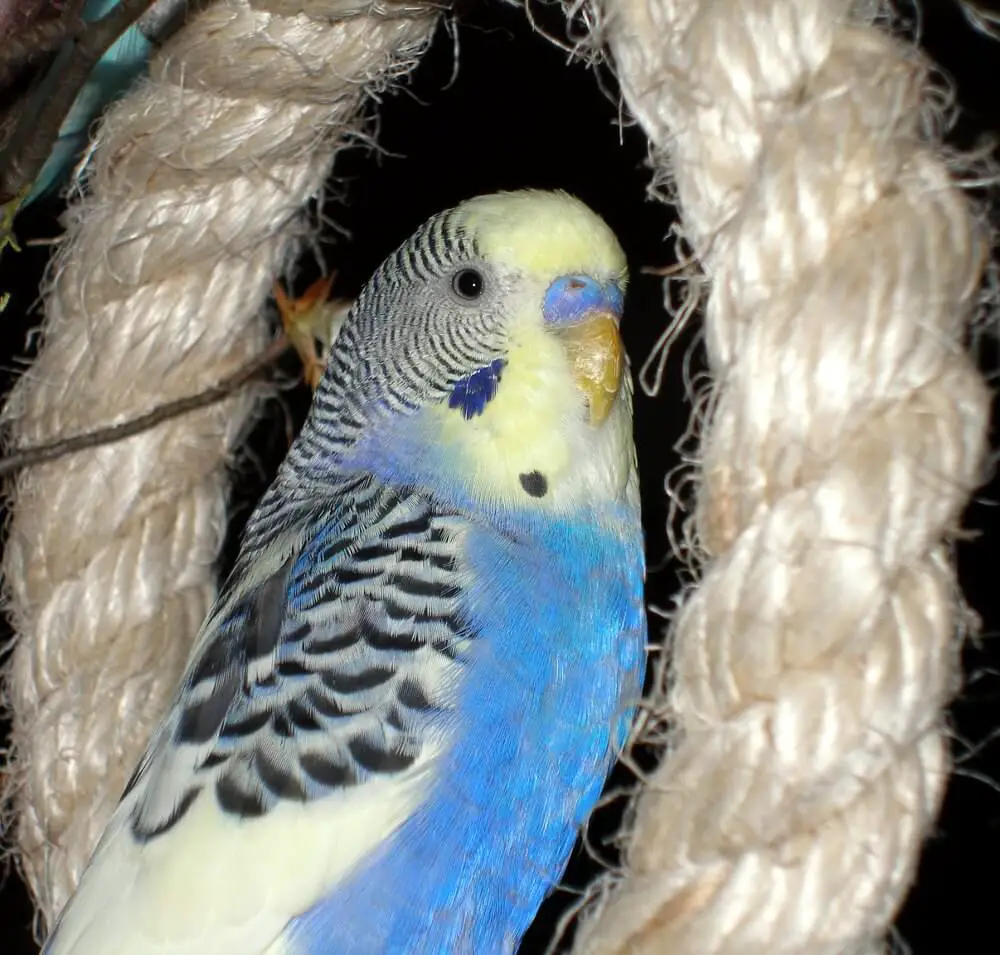
Similarly, bgf and b1 are superdominant, i.e. if the bird has these two alleles together (bgf/b1), it has more yellow than if it has only two copies of the same allele (bgf/bgf or b1/b1). On the other hand, Bgf is partially dominant on b2, since when the two alleles are present together, the golden mask is “light”.
And finally, Byf and b1 are superdominant as well. When the bird has both alleles together (byf/b1) it expresses more yellow than those with only two copies of the same allele. Byf is partially dominant on b2.
It is clearer with a diagram (where we will take the nomenclatures “single factor” and “double factor”, to show that the same name can designate two very different birds):
Photo of yellow mask type 2 “intense” (the flash makes it look a little lighter than it actually is)
Budgie colors Yellow mask 2

You can’t use the capitalization convention for dominance, because with those four, it would be too complicated. It is also important to note that the yolk tends to intensify after the first molt. So we can only really see the colors as they are described when the bird is young, afterwards, differentiating them becomes more and more difficult.
Budgie colors a Golden mask
Last point: specialists such as Peter Bergman and Otto Völker, after observing budgie parakeet plumages under ultraviolet light (which birds perceive), noticed that only certain parts of the feathers colored yellow reflected UV.
So there are probably not one but two yellow pigments in the budgie. The yellow pigment that also reflects UV light draws patterns similar to those seen in yellow in type 2 yellow masks and Australian golden masks. This pigment would be left more or less intact by the byf and bgf alleles, which would rather remove the pigment not reflected by UV.
Budgie colors Gray wings
DILUTION (four alleles,dil+, dilgw, dilcw, and dild) – influences the synthesis of black pigment (quantity)
Now that we have acquired all the vocabulary necessary to understand genetics, let us look at the “diluted” gene, “dil” for intimates. It determines the dilution of melanin, the black pigment. Undiluted, the bird has black markings on the wings (“ripples”). With one of the other three alleles, this black is diluted into more or less intense gray. So in all, there are 4 four alleles, named after the color of the bird when it has two identical alleles:
- dil+: “wild” form
- dilgw: grey wings
- dilcw: clear wings
- dild: diluted
We will now look at all the possible combinations, and see the color they give:
- dil+/dil+: wild type, black ripples.
- dil+/dild: wild type
- dil+/dilcw: wild type
- dil+/dilgw: wild
Budgie colors Light wings Fullbody Diluted
Type The dil+ alleles are therefore dominant over the other three.
- dilgw/dilgw: grey wings
- dilgw/dilcw: full body: intermediate between grey wings and light wings: both alleles are codominant
- dilcgw/dild: grey wings
The dilgw allele is therefore recessive with respect to dil+, codominant with respect to dilcw and dominant with respect to dild.
- dilcw/dilcw: light wings
- dilcw/dild: light
wings The dilcw allele is therefore dominant compared to dild.
DILD/DILD: diluted (even lighter than “light wings, lighter body color too)
Budgie colors INO
INO(two alleles ino+,inocl, and ino) – influences the synthesis of pigment noir
This gene is also located on the sex chromosome Z. There are three alleles: the “wild” ino+, which is most common in the wild population. It allows the synthesis of melanin all over the body of the bird, so a colorful belly (blue or green depending on the case), and wings bearing black undulations. The other alleles are:-inocl:
when a male has two copies (for females, they can not have more than one since we are on a sex chromosome), it is colored “texas clear body”, with melanin on the wings only.
–ino: when a male has two copies (or female one), it is of color “Ino”, without any trace of melanin (beware of the confusion between the name of the allele and the name of the color… we will capitalize the name of the color so as not to confuse them).
Let’s take a look at all the possibilities. First the females.
- Zino+/W: “melanin on the body and wings wild type”
- Zinocl/W: Texas clear body
- Zino/W: Ino
The males:
- Zino+/Zino+: “melanin on the body and wings wild type”
- Zino+/Zinocl: “melanin on the body and wings wild type”
- Zino+/Zino: “melanin on the body and wings wild type”
Budgie colors Texas Light Body
It therefore only takes one ino+ allele to make melanin: the wild form is dominant over the ino and texas clear body forms.
- Zinocl/Zinocl: Texas clear body
- Zinocl/Zino: Texas clear body
- Zino/Zino: Ino
Texas’s clear body is therefore dominant over Ino.

Two Texas clear bodies (green series and blue series)

A gray-green Texas clear body (see Dominant Gray).
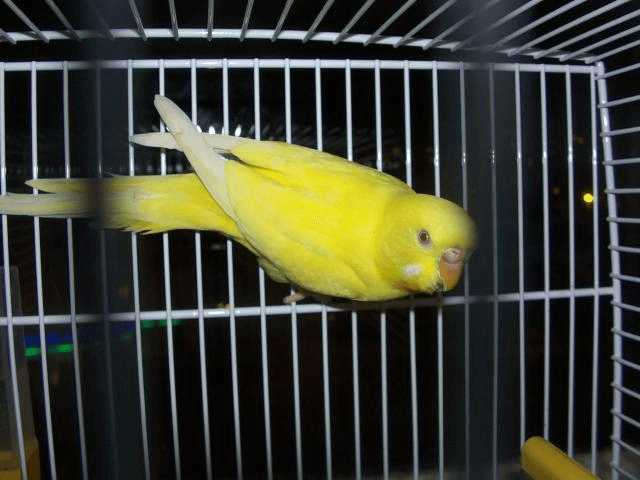
A lutino. (Photo copyright: Pascale Maitre)What color exactly will the “Ino” budgies be? It depends on their ability to produce yellow pigment, and therefore their alleles at the level of the “blue” gene. If they can, they will be more or less yellow (Lutino), otherwise, they will be white (Albino). Their eyes will always be red.Texas clear bodies will be similarly white with black undulations on the wings, or yellow with black undulations on the wings.On the other hand, whatever their alleles are at the level of the other genes responsible for the manufacture of melanin, birds will not make any melanin.There is one exception, however, and that is when a certain allele of the “Cinnamon” gene comes to meddle. (we’ll talk about it after watching “Cinnamon” more closely..
Budgie colors Cinnamon
(deux allèles cin+ et cin) – influe la synthèse du pigment noir
Cinnamon is a very special gene. It transforms black melanin into browner and lighter melanin. It is located on the sex chromosome Z, like ino and opaline. But in addition, on this chromosome, it is very close physically toino, which can be important when trying to combine these two mutations to obtain the very rare and very pretty “Lace Wings”.
As with the opaline and ino[/i] genes, there are three possibilities for males, and two for females. Females can only be Zcin+/W(wild type) or Zcin/W(Cinnamon)
Males will be either:
- Zcin+/Zcin+: “wild type”
- Zcin+/Zcin: “wild type”
- Zcin/Zcin:Cinnamon
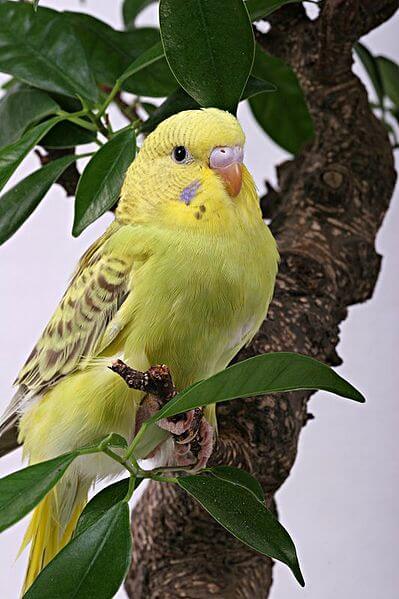
Where it gets a little complicated is when we realize that females Zino_cin/W, Zcin/W, andZino_cin/Zino_cin males, instead of being “Ino”, i.e. unable to make melanin, actually have very thin beige edges on the wings. The cin allele partly restores the inability of “Ino” birds to make melanin!
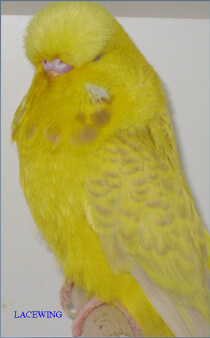 A gray-green Texas clear body
A gray-green Texas clear bodyAs the cinnamon and dino genes are very close physically on their chromosomes, however, it is not easy to combine the rare ino- and cin alleles. It was necessary to make several crosses using Zcin+_ino/Zcin_ino+ males, to achieve this, thanks to a phenomenon that happens during the manufacture of spermatozoa (or eggs, but not on the sex chromosomes of females because W is too small), where chromosomes exchange pieces. With a diagram, it will be clearer:
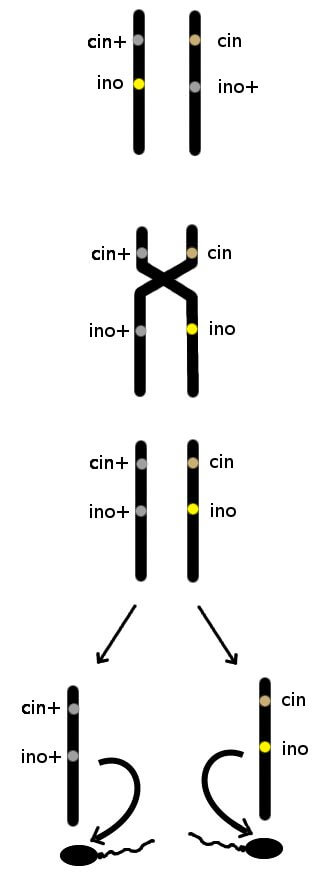
So to have “lacewings”, it is necessary either to cross individuals who already have the alleles correctly ordered or to use ino- and cinnamon carrier males (Zcin + _ino / Zcin_ino+) then to cross their descendants with each other and have a lot of patience (the exchange of pieces of chromosomes in carrier males occurs in about 36% of cases).
On the other hand, lacewings crossed together will always give lace wings since they no longer carry a “wild” specimen for either theino genes or thecinnamon gene.
Budgie colors Slate
(two alleles,sl+, and sl) – influences the structure of feathers.
Slate, or slate in English (hence the name of the gene), is a gene that changes the structure of feathers and the way they diffract light. It is the last known gene carried by the Z chromosome, and therefore linked to sex.
There are therefore two possibilities for the female:
- Zsl+/W: “wild type”, blue is diffracted normally
- Zsl/W: diffracted blue is darker and less vivid, making it dark green-gray (yellow+blue-dark gray) or dark blue-gray. The actual color of the bird depends on the presence of alleles that change the color of the plumage at the level of other genes, such as “blue” or “dark”.
For males, three possibilities:
- Zsl+/Zsl+: “wild type”, blue is diffracted normally
- Zsl+/Zsl: “wild type”, blue is diffracted normally
- Zsl/Zsl: diffracted blue is darker and less vivid. The actual color of the bird depends on the presence of alleles that change the color of the plumage at the level of other genes, such as “blue” or “dark”.
It seems difficult to produce slate opalines because the two genes are quite close on chromosomes. It is therefore necessary to wait for the random exchanges of pieces between chromosomes (see Ino and cinnamon.
Budgie colors Violet
(two alleles, V+ and V) – influences the structure of feathers
Violet is a gene carried by a non-sex chromosome. Like “Slate”, it changes the structure of feathers.
There are therefore three possibilities for both sexes:
- V+/V+: “wild type”
- V+/V: on the green, it darkens the tone a little. On blue, the effect varies according to the presence of the various alleles of “dark”.
- V/V: Greens are in principle still a little darker than V+/V, and blues also vary, in the same way.
Here is a table of the different variations (as much as possible, the pantome codes have been respected):

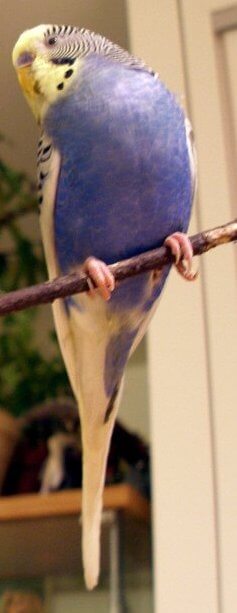
Budgie’s color Purple individual
- b/b, D+/D+V+/V+
- b/b, D+/D, V+/V
- b/b, D+/D, V+/V+
It is difficult to know because these three combinations give practically the same tone of purple.
Budgie colors Dominant Grey
(two alleles, G+ and G) – influences the structure of feathers.
There are therefore three possibilities for both sexes:
- G+/G+: “wild type”
- G+/G: feathers lose all their ability to diffract light (blue). Green becomes khaki, we speak of “gray-green”, and blue becomes gray.
- G/G: This character of loss of diffraction, and therefore of the blue color, is dominant.

gray-green individual (note the resemblance to the olive, in dulle
Budgie colors Anthracite
(two known alleles, An+ andAn) – influences feather structure (in quantity)
This gene works in the same way as the dark gene and has about the same effects.
There are three possibilities:
- An+/An+: “wild type”, the body remains light
- An+/An: slightly dark color, a little more than dark green or cobalt
- An/An: dark olive green in the green series, and very dark blue with purple reflections in the blue series. It is especially this blue that makes it possible to make a difference with the effects of the dark gene.
It is a case of codominance. The An allele is extremely rare.

Budgie colors Bronze Fallow
(two known allelesfg+ and) – influences melanin synthesis
The chain of melanin synthesis is long, with many genes, which leaves room for many possibilities of alteration. We will see three different genes, the “fallow”, which have each been identified by an allele, which, carried in duplicate, prevents melanin from turning black. It is therefore brown, as in the color cinnamon, but even lighter.
These three genes are carried by non-sex chromosomes.
- fg+/fg+: wild type, black melanin
- fg+/fg: wild type, black melanin
- fg/fg: brown melanin, dark red eyes Bronze fallow is a recessive color.
Examination of the feathers revealed that melanin forms smaller and more numerous granules than in the color “cinnamon”. It is also divided into small flakes.
The fallow can be added with the dilutions (in particular the allele “did” in duplicate), and “opaline” (allele “op”) to give colors very close to the “lacewings” (see Ino and cinnamon).
A very rare color, “Recessive Ino“, is considered by some authors to be due to an allele of the “bronze fallow” gene. In duplicate, this allele would give an “Ino” color, entirely devoid of melanin. But this allele is extremely rare.
Budgie colors Fallow English
(two known allelesfe+ and fe)- influences melanin synthesis
Another gene carried by a non-sexual chromosome whose allele alters the nature of melanin when it is in duplicate:
- fe+/fe+: wild type, black melanin
- fe+/fe: wild type, black melanin
- fe/fe: brown melanin, light red eyes.
This character is therefore recessive. The fallow can be added with the dilutions (in particular the allele “did” in duplicate), and “opaline” (allele “op”) to give colors very close to the “lacewings” (see Ino and cinnamon).

Budgie colors Fallow Ecossais
(two known alleles fs+ and fs)- influences melanin synthesis
- FS+/FS+: wild type, black melanin
- fs+/fs: wild type, black melanin
- fs/fs: brown melanin, light red eyes with pink iris This fallow is also a recessive color. The fallow can be added with the dilutions (in particular the allele “did” in duplicate), and “opaline” (allele “op”) to give colors very close to the “lacewings” (see Ino and cinnamon).
Budgie colors Dominant Clear Body
(two known alleles, Cl+ and Cl) – influences melanin distribution
Here is a gene for which we know two alleles, one of which is probably the result of a mutation that occurred in breeding.
Three possible combinations:
- Cl+/Cl+:wild type. Melanin is distributed throughout the body
- Cl+/Cl: the belly and back are devoid of melanin, and the black markings of the wings are darker (as for the “Texas clear body”, see “Ino”. This character is, as it suggests, dominant since it only takes one copy of the allele for it to be expressed).
- Cl+/Cl: the belly and back are devoid of melanin, and the black markings of the wings are darker.
Budgie colors Danish EIP
(two known alleles, r+, and r) – influences the distribution of melanin and yellow pigment
- R+/R+: Wild type, melanin is present all over the body
- R+/R: Wild-type, melanin is present all over the body
- R/R: feathers are completely devoid of melanin, according to an editorial drawing (see photo). The eye is black, devoid of irises, and the wax of the pink beak in ailments. The wings of “green” birds appear more yellow than in inos, indicating that the allele also influences the distribution of the yellow pigment…The Danish magpie color is recessive.
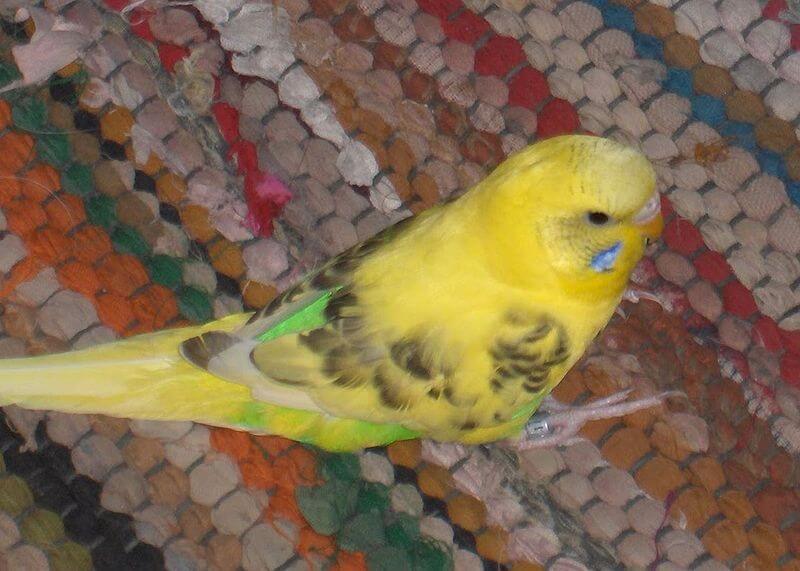
Budgie colors Australian Pie
(two known alleles, Pa+ and Pa) – influences melanin distribution
- Pa+/Pa+: wild type, melanin is present all over the body
- Pa+/Pa: feathers are completely devoid of melanin, according to a drawing more or less similar to that in the photo below. The legs are often
pink - Pa/Pa: feathers are completely devoid of melanin, according to a drawing more or less similar to that in the photo below. The paws are often pink
The Australian magpie color is dominant, but incompletely: the importance of the discolored surface varies according to the individuals, and it is not possible, just by looking at the proportion of discolored feathers, to know if they have the Pa allele in single or double copy.
The proportion of discolored feathers is likely determined by one or more other genes, which have not yet been identified, although some are suspected to be sex-related.

Budgie colors Dutch Pie
(two known alleles, Pc+, and Pc) – influences melanin distribution
- Pc+/Pc+: wild type, melanin is present all over the body
- Pc+/Pc: feathers are completely devoid of melanin, according to a pattern more or less similar to that of the Australian magpie, with the difference that the light area of the chest is higher, often up to the mask. The legs are often grey
- Pc/Pc: feathers are completely devoid of melanin, according to a design more or less similar to that of the Australian magpie, with the difference that the light area of the chest is higher, often up to the mask. The legs are often gray
The Dutch magpie color is dominant, but, like the Australian magpie, incompletely: the importance of the discolored surface varies according to the individual, and it is not possible, just by looking at the proportion of discolored feathers, to know if they have the Pc allele in single or double copy.
The proportion of discolored feathers is probably determined by one or more other genes, which have not yet been identified, although some are suspected to be related to sex.
Birds that are both Danish magpie and Dutch magpie (r/r Pc+/Pc or r/r Pc/Pc) no longer have any trace of melanin on the plumage. Their eyes, on the other hand, are entirely black (a little red under some lights), without white irises, which makes it possible to distinguish them from the inos.
Budgie colors Perlee
(Sp gene, but it is not known how many alleles are involved, or even if only one gene is involved) – influences the distribution of melanin in the body
Here is a gene for which at least two alleles are known, one of which is probably the result of a mutation that occurred in culture.
In the most classic case, there are three possible combinations:
- Sp+/Sp+:wild type. Melanin is distributed throughout the body
- Sp+/Sp: The wings bear light pearl-shaped spots. This character is codominant since it only takes one copy of the allele to cause the pearl color, but with two copies… (see below)
- Sp/Sp: The body is completely devoid of melanin, except the eyes which remain black with a white iris.
According to some studies, crosses of pearls do not give the expected results with a simple scheme of a gene with two alleles. So there are still things to discover about the genetics of this pretty color!
Budgie colors Black Face
(two known alleles, bf+and bf) – influences melanin distribution
Three possible combinations:
- bf+/bf+: wild type, the distribution of melanin is normal
- bf+/bf: wild type, the distribution of melanin is normal
- bf/bf: black ripples pass from the neck to the head, continuing to the beak. The spots are also repeated by going up toward the beak. The head looks dark, but not black. There are also fine ripples on the belly.This character is recessive.

Budgie colors Dark Wings
(two known alleles, Dwi+ and Dwi) – influences melanin synthesis (in quantity)
This gene has recently been discovered, and all its heredity may not yet be fully known. TheDwiallele can only be expressed in birds that already have the design of “diluted” wings (by the dild and dilgw alleles in particular). It restores part of the dilution, by sinking the wings.
- Dwi+/Dwi+: the wings remain clear
- Dwi+/Dwi: the ripples are somewhat restored
- Dwi/Dwi: the ripples are more restored
It is a case of codominance.
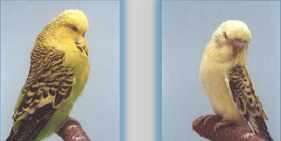
Rare Colors
There are still other colors, but they are very rare, or extinct. We do not necessarily know their genetics yet. Among them we can mention:
– Recessive gray, which plays on the structure of feathers as dominant gray but is not transmitted in the same way
– Australian fallow, which makes melanin brown
– Faded that lightens plays on the distribution of melanin, decreasing it, especially towards the head and upper body (which become green or light blue, with a gradient to “normal” feathers).
- Saddlebacked: which lightens the melanin in the shoulders and back (black ripples turn gray)
- Mottled: feathers are devoid of melanin, a little more with each molt.
- Frosted: the feathers of the breast no longer carry melanin, which gives the blues a “frosty”
aspect - Brown wings/sepia: undulations of the wings of a dull brown. Recessive. Seems to have disappeared since the Second World War
- Misty: the color of the body is slightly diluted. Codominant character (those who have two copies of the recently discovered allele are thinned by about 25%)
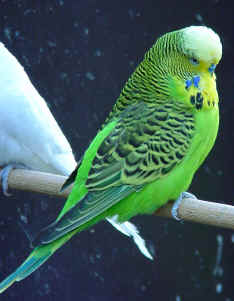
Some of these rare colors are visible
Thanks to Elena Alberta, Takara, Brigitte Bodson, and Pascale Maitre for allowing me to use their photos!
Glossary of genetics for those who want to learn additional terms:
- Homozygous: the two alleles that the individual carries are identical. This is the case of the “simple factor”
- Heterozygous: the two alleles that the individual carries are different. This is the case of “double factor”, but also of those that carry two alleles of wild type.
- Crossing-over: “exchange of pieces” between chromosomes at the time of gamete manufacturing.
- Genotype: all the alleles carried by the individual. We write only those genes that interest us, i.e. genes for which we know that the bird carries at least one allele different from the “wild type”.
- Phenotype: the external appearance of the bird, color, and shape of its feathers, shape of its beak, etc
- Autosome: non-sexual
chromosome
Summary of all possible relationships between alleles, with an imaginary example of orange pigment synthesis, and a gene with two alleles: A and B.AA and BB are homozygous AB is heterozygous

Frequency of crossings between the different genes of the Z chromosome (source: A guide to color mutations & genetics in parrot by Terry Martin published by ABK in 2002):
- Between Zcin and Zino…………. 3%
- Between Zcin and Zop………… 33%
- Between Zop and Zino………… 30%
- Between Zino and Zsl…………… 7%
- Between Zop and Zsl………….. 40%
- Between Zino and Zsl………….. 10%
- Between Blue and Dark………. 14%
Budgie Color and Mutation
SOURCE:Alen AxP

